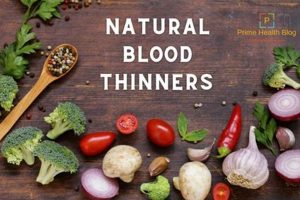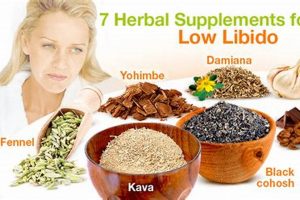Botanical preparations marketed to support healthy blood sugar levels are frequently termed dietary adjuncts. These products, derived from plants, are available in various forms, including capsules, teas, and powders, and are often perceived as natural alternatives or complements to conventional diabetes management strategies. Examples of commonly cited plants include cinnamon, berberine, and bitter melon.
The perceived value lies in the potential to modulate glucose metabolism, improve insulin sensitivity, and mitigate diabetes-related complications. Historically, numerous cultures have employed plant-based remedies for managing ailments exhibiting symptoms now associated with diabetes. The growing interest in these alternatives reflects a desire for more holistic and patient-centered approaches to wellness.
The subsequent discussion will delve into the scientific evidence surrounding several prominent botanical options, examine potential risks and interactions, and emphasize the importance of informed decision-making when considering their use in conjunction with standard diabetes care protocols. This examination prioritizes rigorous assessment of available data to offer a balanced perspective.
Guidance on Integrating Botanical Adjuncts for Blood Sugar Management
The following points offer considerations for individuals exploring the use of botanical preparations in conjunction with conventional diabetes management strategies. Prioritize evidence-based decisions and collaboration with healthcare professionals.
Tip 1: Consultation is Paramount: Engage in thorough discussions with a physician, endocrinologist, or qualified healthcare provider before initiating any botanical regimen. This ensures that the adjunct does not conflict with existing medications or health conditions.
Tip 2: Scrutinize Product Quality: Rigorously evaluate the source and manufacturing processes of chosen botanical products. Seek certifications from reputable third-party testing organizations to verify purity and potency.
Tip 3: Adhere to Recommended Dosages: Strict adherence to recommended dosage guidelines is essential. Exceeding the suggested intake may lead to adverse effects or interactions. Consult with a healthcare professional to determine an appropriate dosage based on individual needs.
Tip 4: Monitor Blood Glucose Levels Regularly: Frequent self-monitoring of blood glucose levels is crucial to assess the impact of botanical usage. This allows for timely adjustments to medication or lifestyle interventions as needed.
Tip 5: Be Aware of Potential Interactions: A comprehensive understanding of potential interactions between botanical preparations and conventional diabetes medications is vital. Certain herbs may potentiate or inhibit the effects of prescribed drugs, necessitating careful monitoring.
Tip 6: Recognize Limitations: Acknowledge that botanical supplements are not a substitute for established diabetes treatments, including medication, diet, and exercise. They should be considered adjuncts, not replacements.
Tip 7: Discontinue Before Surgical Procedures: Cease the use of any botanical preparation at least one to two weeks prior to scheduled surgical procedures to mitigate the risk of bleeding complications or adverse interactions with anesthesia.
Consistent application of these points promotes safer and more informed utilization of botanical supplements as part of a comprehensive diabetes management plan. It is important to remember that self-treating diabetes can be dangerous, and medical supervision is vital.
The subsequent sections will explore specific botanical preparations, their purported mechanisms of action, and the current state of scientific evidence supporting their use. This analysis will provide a more detailed understanding of the available options and their associated considerations.
1. Efficacy and Safety
The core determinant in considering any adjunct to conventional diabetes treatment centers on demonstrating both efficacy in managing blood glucose and an acceptable safety profile. In the realm of botanicals, this requires a rigorous examination of available evidence. Demonstrating that a specific herbal preparation consistently and significantly improves glycemic control, as measured by HbA1c levels, fasting blood glucose, or postprandial glucose spikes, is paramount to establishing efficacy. Simultaneously, comprehensive safety assessments, including monitoring for adverse events, potential drug interactions, and contraindications, must be conducted to ensure that the benefits outweigh the risks. For instance, while some studies suggest that cinnamon supplementation may modestly lower blood sugar, concerns exist regarding coumarin content and potential liver toxicity, highlighting the imperative for balanced evaluation.
The challenges associated with definitively establishing efficacy and safety for “diabetes herbal supplements” are multifaceted. Many studies are limited by small sample sizes, short durations, and methodological weaknesses. Furthermore, the inherent variability in botanical preparations, including differences in plant species, growing conditions, and extraction processes, can introduce inconsistencies in the active compounds present, thereby affecting the reproducibility of research findings. A notable example is the varying concentrations of ginsenosides in different ginseng products, which can lead to inconsistent effects on glucose metabolism. Moreover, the potential for interactions with other medications, particularly oral hypoglycemic agents and insulin, requires careful consideration to prevent hypoglycemia or other adverse events.
In summary, establishing efficacy and safety constitutes a critical prerequisite for the responsible use of botanical supplements in diabetes management. A comprehensive evaluation of scientific evidence, including well-designed clinical trials and rigorous safety assessments, is essential. Individuals considering the use of “diabetes herbal supplements” must engage in informed decision-making, in consultation with their healthcare providers, to weigh the potential benefits against the risks and ensure that their chosen regimen is both effective and safe. The need for standardization, proper dosage, and awareness of potential interactions cannot be overemphasized.
2. Mechanism of Action
Understanding the mechanism of action of “diabetes herbal supplements” is crucial for determining their efficacy and potential risks. This knowledge allows for a more informed assessment of whether a given botanical intervention can effectively manage blood glucose levels and how it might interact with existing diabetes treatments.
- Insulin Sensitization
Some botanical preparations are purported to enhance insulin sensitivity, meaning the body’s cells become more responsive to insulin’s signal to absorb glucose from the bloodstream. Berberine, for instance, has been shown to activate AMPK, an enzyme that plays a role in glucose uptake and insulin signaling. If insulin resistance is lowered, then more glucose is going to be taken up and used by the cells. Also, the amount of blood sugar will be decreased.
- Glucose Absorption Inhibition
Certain “diabetes herbal supplements” may reduce glucose absorption in the intestines. This can lead to a lower postprandial glucose spike after meals. For example, some compounds found in white mulberry leaves are believed to inhibit alpha-glucosidase, an enzyme responsible for breaking down complex carbohydrates into glucose, which lowers the intake of glucose. The effects can be similar to medications like acarbose.
- Insulin Secretion Stimulation
Some botanicals are suggested to stimulate insulin secretion from the pancreas. This effect could potentially lower blood sugar levels but requires careful consideration due to the risk of hypoglycemia. An example includes bitter melon, which is traditionally used in some cultures to manage diabetes. Further scientific research is needed to confirm these claims and to fully understand its mechanism, since there is not that much evidence to this effect.
- Improved Glycemic Control
This covers a number of aspects relating to how different herbs can interact with different factors that improve and sustain blood sugar. For instance, in order to improve and sustain blood sugar, several processes are needed, and they all interact with one another. The effect of herbs on one of the factors affects other processes as well. It is important to consider that these procedures are all related and dependent on one another.
The investigation into the specific mechanisms by which these botanical compounds influence glucose metabolism is ongoing. While some of these mechanisms are supported by scientific evidence, further rigorous research is needed to fully elucidate their effects and ensure safe and effective application in diabetes management. It is crucial to appreciate that the mechanisms of herbal preparations can be complex and that their overall impact on glucose control may involve multiple pathways working in concert.
3. Product Standardization
Product standardization represents a critical, yet often overlooked, aspect of using botanical supplements in diabetes management. Inconsistencies in product composition can lead to unpredictable effects on blood glucose levels, potentially jeopardizing patient health. Ensuring that “diabetes herbal supplements” contain a consistent and known amount of active compounds is paramount.
- Batch-to-Batch Consistency
Variations in growing conditions, harvesting methods, and processing techniques can significantly affect the concentration of active constituents in herbal products. Standardized products undergo rigorous testing to ensure that each batch contains a uniform level of the key compounds believed to be responsible for the desired therapeutic effect. For example, milk thistle supplements standardized to a specific percentage of silymarin offer greater assurance of consistent liver-protective effects compared to non-standardized products.
- Quantifiable Active Compounds
Standardization often involves identifying and quantifying specific active compounds within the botanical extract. This allows manufacturers to provide a clear and reliable indication of the potency of their products. For instance, a ginseng product labeled as standardized to 5% ginsenosides indicates that each dose will provide a predictable amount of these compounds, which are believed to contribute to ginseng’s adaptogenic and glucose-regulating properties.
- Third-Party Certification
Independent third-party organizations offer certification programs that verify the quality and consistency of dietary supplements. These certifications often involve testing for identity, purity, potency, and absence of contaminants. Products bearing certifications from reputable organizations, such as USP, NSF International, or ConsumerLab.com, provide an added level of assurance regarding product standardization.
- Bioavailability Considerations
Even when a product is standardized to a specific concentration of active compounds, its bioavailability (the extent to which the compounds are absorbed and utilized by the body) can vary. Some standardized extracts may be formulated to enhance bioavailability, such as by using liposomal delivery systems or combining the extract with absorption enhancers. Understanding the bioavailability of a standardized product is important for predicting its potential therapeutic effects.
The lack of stringent regulatory oversight in the dietary supplement industry underscores the importance of product standardization. Consumers and healthcare professionals must prioritize standardized “diabetes herbal supplements” from reputable manufacturers that employ rigorous quality control measures. This helps to mitigate the risks associated with inconsistent product composition and ensures a more predictable therapeutic response.
4. Potential Interactions
The concomitant use of botanical supplements and conventional diabetes medications carries the inherent risk of pharmacological interactions, necessitating careful consideration to avoid adverse events and maintain glycemic control. Such interactions can manifest through various mechanisms, potentially compromising the efficacy of prescribed treatments or exacerbating side effects.
- Potentiation of Hypoglycemic Effects
Certain “diabetes herbal supplements”, when combined with insulin or oral hypoglycemic agents, may synergistically enhance their glucose-lowering effects, leading to hypoglycemia. For instance, the concurrent use of berberine and metformin may increase the risk of excessively low blood sugar levels, requiring careful monitoring and potential dosage adjustments of conventional medications. This additive effect necessitates heightened vigilance and proactive communication between patients and healthcare providers.
- Inhibition of Drug Metabolism
Some botanicals can interfere with the cytochrome P450 (CYP) enzyme system, which plays a crucial role in the metabolism of many drugs, including those used to treat diabetes. By inhibiting CYP enzymes, herbal supplements may slow down the breakdown of conventional medications, leading to elevated drug levels in the bloodstream and increased risk of adverse effects. An example includes the potential for interactions between St. John’s Wort and certain antidiabetic drugs, affecting their clearance and therapeutic efficacy.
- Impact on Blood Clotting
Several herbal supplements, such as garlic, ginger, and ginkgo biloba, possess antiplatelet or anticoagulant properties. When taken in conjunction with antidiabetic medications that also affect blood clotting, such as aspirin or warfarin, the risk of bleeding complications may be increased. This is particularly relevant for individuals with diabetes who are also at risk for cardiovascular disease and may be prescribed antiplatelet therapy.
- Alteration of Drug Absorption
Certain “diabetes herbal supplements” can affect the absorption of oral medications in the gastrointestinal tract. For example, some herbs may bind to drugs, reducing their bioavailability and diminishing their therapeutic effect. Others may alter gut motility or pH, indirectly influencing drug absorption. This can lead to suboptimal blood sugar control and necessitate adjustments in medication dosage or timing.
Navigating potential interactions requires a comprehensive approach, involving thorough medication reconciliation, awareness of herbal supplement properties, and open communication with healthcare professionals. Individuals considering the use of “diabetes herbal supplements” should be advised to disclose all herbal products they are taking to their physicians and pharmacists to minimize the risk of adverse events and ensure the safe and effective management of their diabetes.
5. Regulatory Oversight
The correlation between regulatory oversight and botanical supplements aimed at diabetes management is of paramount importance. Absence of stringent regulations can expose consumers to products of variable quality, questionable efficacy, and potential safety risks. Regulatory frameworks, when effectively implemented, serve as a protective measure, ensuring that these supplements meet minimum standards for purity, potency, and accurate labeling. The cause-and-effect relationship is direct: weak oversight leads to proliferation of substandard products, while robust regulatory mechanisms promote consumer confidence and safeguard public health.
The United States, for example, operates under the Dietary Supplement Health and Education Act (DSHEA), which places the onus of safety on the manufacturer rather than requiring pre-market approval by the Food and Drug Administration (FDA). This contrasts sharply with the regulatory environment for pharmaceutical drugs. Consequently, the market is flooded with botanical products claiming to manage diabetes, many lacking scientific substantiation. The FDA does possess the authority to take action against supplements that are misbranded, adulterated, or pose a significant safety risk. However, this is often a reactive measure, occurring after reports of adverse events have surfaced, rather than a proactive preventative approach. A lack of rigorous testing requirements and standardized manufacturing practices increases the likelihood of adulteration with prescription drugs or heavy metals, posing a serious health threat to vulnerable individuals with diabetes.
In conclusion, effective regulatory oversight is a critical component for ensuring the quality, safety, and efficacy of botanical supplements marketed for diabetes. Strengthening regulatory frameworks, implementing stricter testing requirements, and enhancing enforcement mechanisms are essential steps to protect consumer health and promote responsible manufacturing practices. The challenges are significant, but the potential benefits of a well-regulated market far outweigh the risks associated with the current state of affairs. A greater emphasis on post-market surveillance and adverse event reporting can further contribute to a safer and more transparent market for botanical supplements aimed at diabetes management.
Frequently Asked Questions
The following addresses prevalent inquiries regarding botanical preparations marketed to manage diabetes. The aim is to offer clear, evidence-based responses to aid informed decision-making.
Question 1: Are “diabetes herbal supplements” a safe replacement for conventional diabetes medications?
Botanical supplements should not be considered substitutes for prescribed diabetes medications. They may, under medical supervision, serve as adjuncts to established treatment plans but lack the rigorous testing and regulatory oversight afforded to pharmaceuticals. Sole reliance on supplements can lead to inadequate glycemic control and increased risk of complications.
Question 2: Can “diabetes herbal supplements” cure diabetes?
Currently, no scientific evidence supports the claim that any botanical supplement can cure diabetes. Diabetes is a chronic condition requiring ongoing management. Supplements may assist in managing symptoms or improving certain metabolic markers, but a cure remains elusive.
Question 3: What are the potential side effects of “diabetes herbal supplements”?
Side effects vary depending on the specific supplement. Common adverse effects include gastrointestinal upset, allergic reactions, and interactions with medications. Certain herbs may also affect liver function or blood clotting. Consulting with a healthcare professional before initiating any herbal regimen is critical to assess individual risks.
Question 4: How can one ensure the quality and safety of “diabetes herbal supplements”?
Choosing products from reputable manufacturers that employ third-party testing for purity, potency, and absence of contaminants is crucial. Look for certifications from organizations like USP, NSF International, or ConsumerLab.com. Standardization of active compounds also indicates a higher degree of quality control.
Question 5: Are “diabetes herbal supplements” regulated by the FDA?
In the United States, “diabetes herbal supplements” are regulated as dietary supplements under the Dietary Supplement Health and Education Act (DSHEA). This law does not require pre-market approval from the FDA, meaning the FDA’s oversight is limited primarily to addressing safety concerns or misbranding after products are already on the market.
Question 6: What information should be provided to a healthcare provider when considering “diabetes herbal supplements”?
Individuals should disclose to their healthcare provider the specific botanical supplement being considered, the dosage, the reason for its use, and any other medications or supplements being taken. This information is essential for assessing potential interactions and ensuring patient safety.
In summary, “diabetes herbal supplements” present both potential benefits and risks. Informed decision-making, guided by scientific evidence and healthcare professional input, is essential to navigate this complex landscape.
The subsequent section will delve into specific botanical preparations, providing a detailed analysis of their purported benefits and limitations.
Diabetes Herbal Supplements
This article has explored the complexities surrounding botanical adjuncts for diabetes management. Key aspects reviewed include efficacy, safety, mechanism of action, product standardization, potential interactions, and regulatory oversight. The examination reveals a landscape characterized by both promise and peril, demanding critical evaluation and informed decision-making.
The responsible integration of “diabetes herbal supplements” into treatment plans requires a commitment to evidence-based practices, stringent product quality control, and transparent communication with healthcare providers. Individuals should view these supplements as potential adjuncts, not replacements, for conventional therapies. Continued research and stricter regulatory measures are necessary to ensure the safety and efficacy of these preparations and to protect vulnerable populations from unsubstantiated claims and potential harm.







